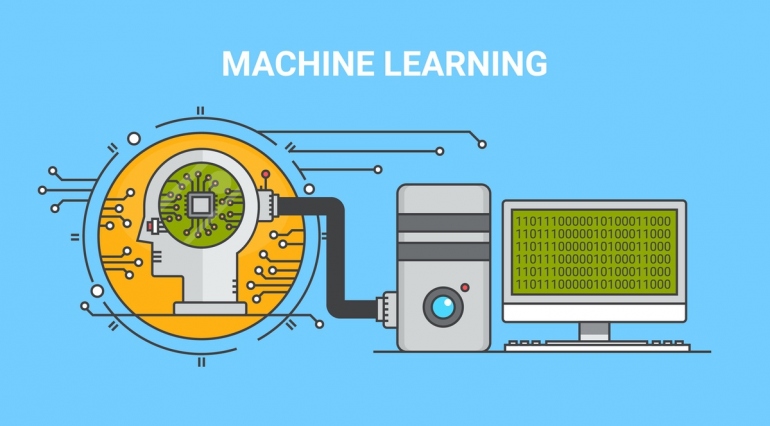Machine Learning
It is a process of teaching a computer program to perform specific tasks. Technically, machine learning is the study of creating applications that bring iterative improvements. We have three major categories of machine learning including Supervised Learning, Unsupervised Learning, and Reinforcement Learning.
A competent custom software development company can help you develop a program based on your choice, whether it be supervised, unsupervised, or reinforcement learning. However, your decision should heavily be relied upon the requirements of your software.
Supervised Learning
The most popular image of machine learning is supervised learning. Supervised learning is easily understandable and can be implemented easily too. In supervised learning, a developer feeds data in the form of examples with mentioned labels. The algorithm is then allowed to predict the label for the given an example, followed by the feedback about the right or wrong answer. Once the algorithm learns to find the right association between the examples and labels, it can observe an unknown example and predict the right label for it.
Examples of supervised learning
- Spam classification
- Face recognition
- Advertisement popularity
Unsupervised Learning
Apparent through the title, unsupervised learning is quite the opposite of supervised learning. It does not feature labels, and instead, the algorithms are fed to analyze the data through tools that understand the properties of data. The system learns to group, cluster, or organize the data just like a human does. This human-like attribute is performed by an intelligent algorithm. The majority of data is in the world is not labeled, so what works her is unsupervised learning. Intelligent algorithms that gather terabytes of unlabeled data and make sense of those data to benefit businesses with unparalleled profit. Unsupervised learning is a source of increased productivity in several industries.
Understanding Unsupervised Learning
Let’s understand through examples. For instance, if we make a large database of all of published the research papers and design an unsupervised learning algorithm to arrange the research papers in a way that it knows how to group those papers so that the users get aware of every progression within a specific research area.
Moreover, unsupervised learning can help in performing new research. For instance, you start new research while incorporating the research database, and the algorithm can monitor your research. As you move on to working ahead and the algorithm will suggest you read the related work which you might be interested in using for citation and references. With such a tool of unsupervised learning, you can boost the productivity of your work.
Unsupervised learning works by using data and its properties. It can be said that this is a data-driven approach. The results acquired from an unsupervised learning task are monitored by the data and its way of formation.
Reinforcement Learning
This type of machine learning is quite different from supervised and unsupervised learning. We see a relationship between supervised and unsupervised learning that is the presence and absence of labels. On this basis, the relationship between reinforcement learning and the other two types of learning is cloudier. Some people describe reinforcement learning as an approach that uses a time-dependent sequence of labels; however, it is better to keep things simple by understanding separately.
A better approach to understand reinforcement learning is understanding it as learning from mistakes. When a reinforcement learning algorithm is used in a program, it will make a lot of mistakes initially but will learn bu making use of users’ preferences and choices. As long as the program learns by getting a good sign on the good response while getting a bad sign on making a bad or wrong choice or decision.
It turns out that we actually reinforce our program or algorithm to learn from good signals received from the user /provider. With time, our learning algorithm gradually learns to make fewer mistakes than it made in the beginning. Just as unsupervised learning is data-driven, we can estimate that reinforcement learning is behavior-driven. It is inspired by the fields of psychology and neuroscience.







